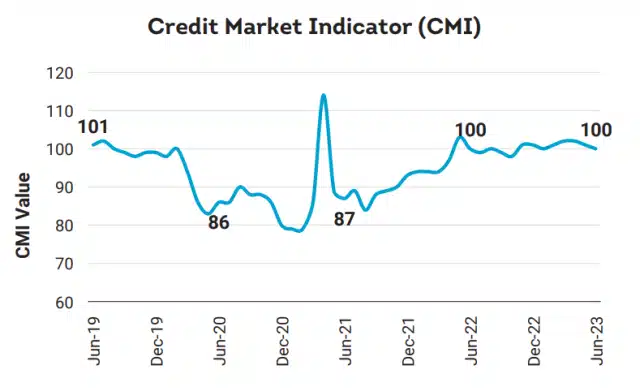Rising Delinquency Rates in Small Personal Loans

The lending landscape in India is undergoing significant changes, particularly in the realm of small-ticket personal loans. Recent data reveals a troubling trend: loans under ₹10,000 are experiencing higher delinquency rates compared to their larger counterparts. This article delves into the factors contributing to this rise in defaults, the role of non-banking financial companies (NBFCs), and the implications for financial inclusion.
Increased Delinquency Rates Among Small Loans
According to the latest Fintech Barometer report by CRIF High Mark and the Digital Lenders Association of India, there has been a staggering 44% increase in delinquencies among personal loan borrowers who took loans between December 2023 and June 2024. This spike in defaults is particularly concerning for loans under ₹10,000. The data indicates that these small-ticket loans are becoming riskier, with peak defaults occurring during the specified period.
The report highlights that NBFCs have been the primary players in this segment, expanding their market share significantly. They have focused on lending to new borrowers, particularly in smaller urban and rural areas outside the top 100 cities. This shift reflects a broader effort to promote financial inclusion through digital lending. However, the increase in delinquencies raises questions about the sustainability of this growth model.
The rise in small-ticket loans is not merely a trend; it represents a critical step towards integrating underserved populations into the formal credit system. Yet, the high delinquency rates suggest that many borrowers may be struggling to meet their repayment obligations, which could have long-term implications for the lending industry.
The Role of NBFCs in Loan Originations
Non-banking financial companies (NBFCs) have played a pivotal role in the recent surge of personal loan originations. They have successfully tapped into markets beyond the traditional urban centers, lending to borrowers in smaller cities and rural areas. This strategy has allowed them to capture a significant share of the personal loan market, both in terms of value and volume.
In the September quarter of FY25, loans under ₹10 lakh remained steady in demand, with a notable portion of originations coming from cities outside the top 100. This trend indicates a growing participation from smaller urban and rural areas, which have historically been underserved by traditional banks. The data shows that these regions contributed 42% of the value and 44% of the volume in loan originations.
However, the increasing number of thin-file borrowers—those with limited credit histories—poses a challenge for NBFCs. While these borrowers are essential for advancing financial inclusion, they also represent a higher risk. The lending landscape is becoming more complex, requiring NBFCs to adopt innovative risk assessment strategies to ensure sustainable growth.
Understanding the Mixed Risk Profile
The current lending environment presents a mixed risk profile. While high-risk and very high-risk loan portfolios have seen a decline, there is a noticeable increase in thin-file borrowers and individuals without credit scores. This shift is crucial for promoting financial inclusion, as it brings underserved individuals into the formal credit system. However, it also raises concerns about the potential for increased defaults.
Delinquency rates across different geographies have remained stable, but the overall landscape is changing. Adverse macroeconomic trends have contributed to slower growth in new loan originations and rising delinquencies since March 2024. Subhrangshu Chattopadhyay, a whole-time director at CRIF High Mark, noted that rising household debt is a significant factor. Super-prime borrowers are increasingly borrowing for asset creation, while subprime borrowers are borrowing for consumption.
The need for sustainable growth in unsecured lending has never been more critical. Regulatory actions and economic pressures necessitate a careful approach to lending practices. Continuous monitoring of borrower credit scores over time is essential to identify potential risks early. Borrowers whose credit scores decline are flagged as higher risk, underscoring the importance of ongoing risk assessment.
Observer Voice is the one stop site for National, International news, Sports, Editor’s Choice, Art/culture contents, Quotes and much more. We also cover historical contents. Historical contents includes World History, Indian History, and what happened today. The website also covers Entertainment across the India and World.

